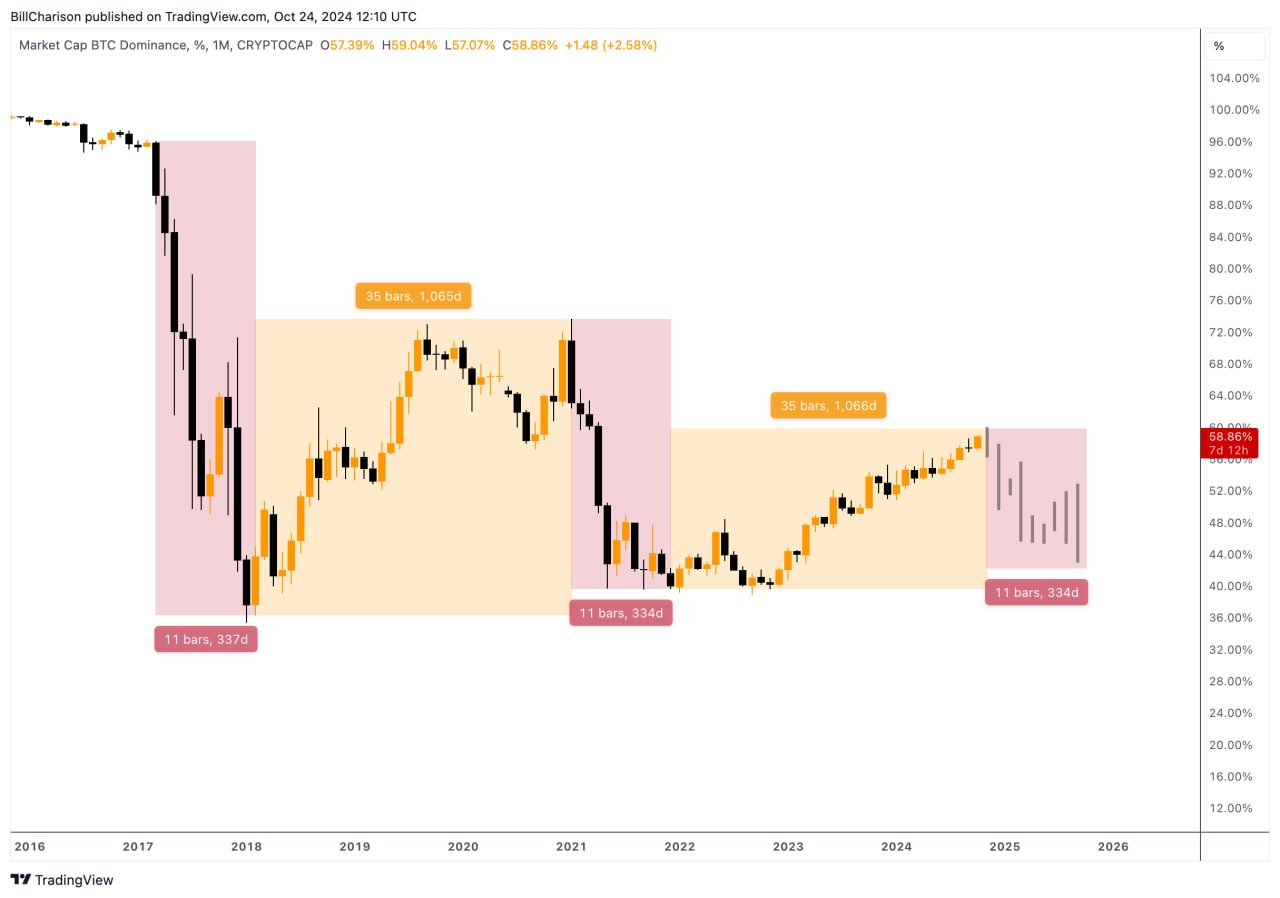Bitcoin  $67,537‘s dominance (BTC.D) over the market increased to 59.22 percent as of October 25, recording its highest level in the bull market that started since September 2022. According to TradingView data, while this upward momentum continues, BTC.D is currently at 59.16 percent. So, how long will Bitcoin’s dominance last?
$67,537‘s dominance (BTC.D) over the market increased to 59.22 percent as of October 25, recording its highest level in the bull market that started since September 2022. According to TradingView data, while this upward momentum continues, BTC.D is currently at 59.16 percent. So, how long will Bitcoin’s dominance last?
A Decline is Expected According to the Dominance Model
According to many analysts in the cryptocurrency market, Bitcoin’s impact on the market dominance chartA clear 200-day pattern is observed in . According to this model, the market dominance of the largest cryptocurrency declines for 50 weeks and then enters an upward trend that lasts 150 weeks.
The last downtrend of this cycle ended in December 2021, near the 40 percent support level. The chart has been moving in an uptrend since then.

In the current cycle, Bitcoin dominance over the market It entered the rising phase at the end of 2021 and is nearing the end of its 150-week growth period. Accordingly, the current cycle may be completed within this week, and according to market analysts, this may be the beginning of a new downward trend that will last until October 2025.
A New Downtrend May Begin
Experts argue that this model is likely to be correct. Considering past cycles, a correction in Bitcoin’s market dominance is expected to begin and a new downward trend is expected to continue until 2025. However, although these estimates are based on historical data, cryptocurrency marketConsidering the high volatility in the market, it would be beneficial to approach cautiously.
Possible changes in Bitcoin’s dominance in the market in the coming days may cause activity throughout the cryptocurrency market. Investors are following these developments closely, as the decline in dominance will directly affect altcoins and move them upwards.
Disclaimer: The information contained in this article does not constitute investment advice. Investors should be aware that crypto currencies carry high volatility and therefore risk, and should carry out their transactions in line with their own research.








